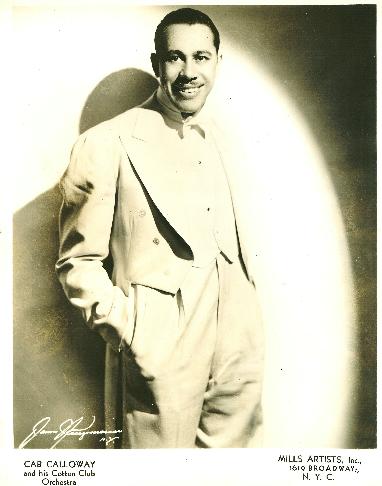Starting the Discussion
What Makes
Betty Boop?

Klein,
pp. 59-90
- Like many critics, Klein
tends to see the Fleischers (as they themselves did) in relation to the towering
figure of Walt Disney. Much of the first section deals with points of comparison
between the two studios, and you might keep a list of the major areas of contrast,
particularly since Klein will eventually argue that the desire to compete
with Disney by duplicating his product is what finally killed the Fleischer
studio in the early '40s.
- What difference does
it make in the Boop cartoons that Betty is firmly located in the Fleischer's
own tradition of urban, immigrant Jewish life, particularly that in New York
City?
- We'll be watching Snow
White in class this week, and since both Klein and Maltin have extended
treatments of the cartoon, be aware of things to look for, both thematic and
artistic. The idea of metamorphosis is not unique to the Boop cartoons (we
saw it used very effectively, for instance, in the Felix shorts), but it is
certainly a trademark of the Fleischers, as you will see in the series of
cartoons we'll look at from their studio.
- In what sense can the
Fleischer cartoons of the 1930s be seen as a continuing response to the economic
devastation of the depression in the US? Be ready to compare how the reality
of depression life is mirrored in the cartoons of the Fleischer studio with
those of the Disney studio during the same period. (This is a perfect chance
to study how the same societal crisis can be played out in very different
ways in the popular entertainment produced contemporary to it.)
- At the same time, Prohibition
has major effects on both the economy and the moral fiber of the time. How
do the Fleischer cartoons seize on the contemporary preoccupation with Prohibition
and turn it into a series of evocative cultural images, not just images of
drinking, but also of the hallucinations that come with it?
- Just a note: I hope you
noticed the flip cartoon of an excerpt from Snow White printed on
the margin of the book, beginning on p. 73 and ending on p. 93. It's kind
of a fun throwback to the earliest forms of animation, the flip book, as well
as an excellent illustration of both metamorphosis and the obsession with
drinking as a symbol of the world turned upside down.
- In the chapter, "Machina
Versatilis," Klein is discussing an episode from Jonathan Swift's Gulliver's
Travels: "In as literal a sense as any cartoon (or the Japanese
animated feature Laputa, 1989) we see technology lifting an island
into the air, turning the logic of the earth upside down. I find this a wonderful
metaphor for the cartoon: a mechanically flying island. It has a life of its
own, but that life is controlled by gears." (p. 77) I'd like us to discuss
this idea in class.
- Another assertion we
should probably discuss starts on the same page. "The cartoon, in its
structure, is a burlesque of instrumentalism, of technocratic utopias of all
sorts. More often than not, this 'spoofery' leads to a tribute to the artificial,
and therefore to the machine. Special effects have precisely this impact,
however critical they may be of the machine world. And 'virtual' reality,
by its very non-nature, glorifies how the machine replaces experience."
- What does Klein have
to say about the way in which the cartoon is especially concerned, thematically
as well as visually, with the intertwining of technology and human life? How
do cartoons particularly reflect the concerns of their animators as well as
the concerns of their characters?
- How does Klein define
the phrase "machina versatilis"?
- What's the basic formula
for the Betty Boop cartoon? What does her design inhibit? What does her design
promote?
- Dave Fleischer was not
either animator or producer; what were his contributions to the cartoons at
Fleischer?
- How might the characteristic
jazz improvizational style be reflected in the Fleischer cartoons? How did
their method of production differ from Disney's?
- The conventional wisdom,
reflected in the documentary you watched this week, is that the Hays Office
killed Betty Boop; Klein asserts that "the reality of business, not morality,
was mostly responsible for her undoing." How does he support this unusual
claim?
- Between internal conflict
and differences with Paramount, the Fleischers eventually lost their entire
inventory; how did this happen?
- Why did the Fleischers
abandon their characteristic style (as seen in Popeye the Sailor Meets
Ali Baba and His Forty Theves, for instance) for the less appealing style
they used in the feature length Gulliver's Travels?
-
What
style characterized the 1941 Superman cartoons? How did this style
suit the time period in which they were produced and released?
- What were the rewards
for animators (including those at Disney, Warner Brothers and Disney) during
the 1930s and 1940s?
- On p. 89, Klein recaps
the development of the factory (or division of labor) style of animation,
and you should review it before going on to his conclusion that "within
twenty years, American animation went from an artisan craft (modeled on illustration)
to a corporate studio, and finally to a division in a conglomerate corporation,
with licensing specialist, toy outlets, and, in time, to theme parks, and
beyond."
Today, the plan is to
watch some or all of the following cartoons in class:
Snow White (1933)
Somewhere in Dreamland (1936)
The Cobweb Hotel (1936)
Popeye the Sailor Meets Ali Baba and his Forty Thieves (1937)
The Mechanical Monsters [Superman] (1941)
Back
to Home Page


